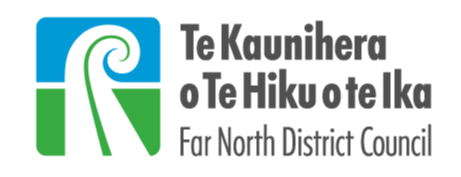Initial Proposal
In summary, we propose:
- Increasing the number of councillors appointed to community boards (with voting rights) to two councillors per community board – for the Bay of Islands-Whangaroa Community Board, one from the Bay of Islands-Whangaroa General Ward, and one from the Ngā Tai o Tokerau Māori Ward.
- Increasing the number of councillors appointed to the Te Hiku Community Board (with voting rights) to two councillors from the Te Hiku General Ward or the Ngā Tai o Tokerau Māori Ward.
- Increasing the number of councillors appointed to the Kaikohe-Hokianga Community Board (with voting rights) to two councillors from the Kaikohe-Hokianga General Ward or the Ngā Tai o Tokerau Māori Ward.
- Renaming the Whatuwhiwhi Subdivision of the Te Hiku Community Board to Karikari-Awanui Subdivision
Click on the blue heading boxes below to find out more about the proposal. If you have any questions, you can email submissions@fndc.govt.nz.
Currently, each community board (Bay of Islands-Whangaroa, Kaikohe-Hokianga and Te Hiku) has one councillor appointed with voting rights. We are proposing increasing this to two councillors with voting rights appointed to each community board to provide fairer and more effective representation. These will be comprised of:
Bay of Islands-Whangaroa Community Board: One councillor representing the Bay of Islands- Whangaroa General Ward, and one councillor representing the Ngā Tai o Tokerau Māori Ward (with voting rights).
Kaikohe-Hokianga Community Board: Two councillors representing either the Kaikohe-Hokianga General Ward or the Ngā Tai o Tokerau Māori ward (with voting rights).
Te Hiku Community Board: Two councillors representing either the Te Hiku General Ward or the Ngā Tai o Tokerau Māori Ward (with voting rights).
A boundary change in the 2021 Representation Review included a shift of the Awanui township into the Whatuwhiwhi subdivision and removed Awanui from the North Cape subdivision.
Because of this, a name change of the Whatuwhiwhi Subdivision to the Karikari-Awanui Subdivision is proposed.
A community of interest is defined as a group of people who are connected in some way. It may be ‘functionally’, for example through shared schools, shopping or service centres. It might be more ‘perceptual’ – a sense of belonging to a place through historic use or cultural practice. It could be a political affinity that unites a group of people, or a topographic connection, such as a river catchment or mountain. It is likely that a community of interest includes elements of more than one of these factors.
To be effective, communities of interest should not be split. The size and geography of an area should allow representatives and constituents to have reasonable access to each other, so that public and face-to-face meetings are possible. To be effective, elected representatives need to be able to represent the variety of views within their area.
Fair representation means each elected member represents roughly the same number of people. There is a “plus or minus 10% rule” to help us avoid unnatural divisions between wards and subdivisions of community boards. Currently, the Far North has an estimated resident population of 74,760 with a Māori Electoral Population of 26,300 and a General Electoral Population of 48,460. That means:
Each general ward councillor represents approximately 8,077 people and each Māori ward councillor represents approximately 6,575 people.
Formal documents
The following documents outline the changes proposed:

